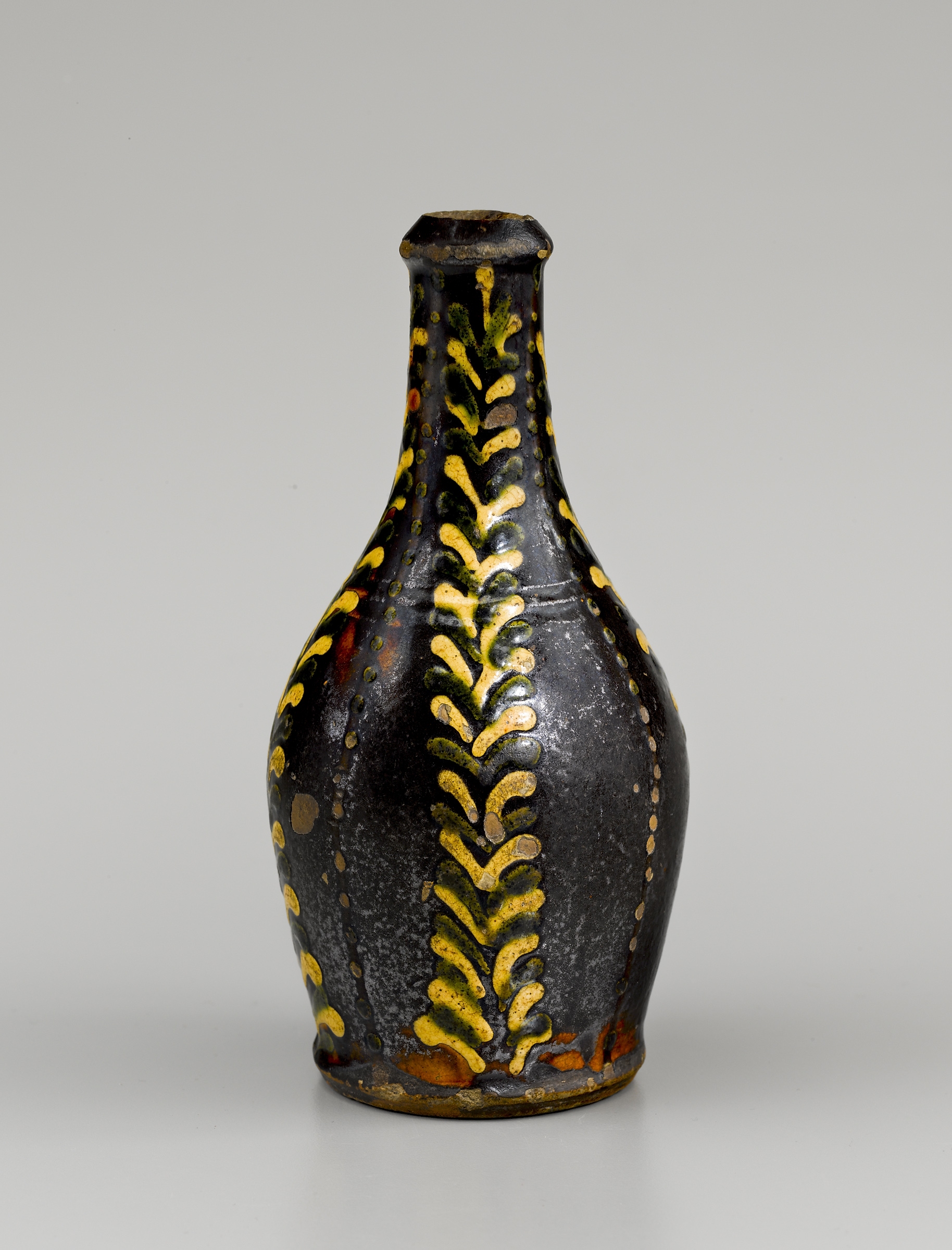Bottle
Most of the surviving examples of North Carolina slipware are associated with Germanic craftsmen who worked in and around the St. Asaph’s district of Orange County (now southern Alamance County). The forms and motifs introduced by the first potters who settled in that area coalesced in southwestern Germany, arriving with immigrant craftsmen who initially settled in Berks County, Pennsylvania, and persisted in North Carolina from the middle of the eighteenth century to the middle of the nineteenth century. Slipware from the St. Asaph’s tradition differs significantly from that associated with the Moravians. Whereas the Moravians had a naturalistic vocabulary with theological underpinnings and appear to have limited their trailing to dishes and plates, the St. Asaph’s potters used a wide range of motifs— stylized crosses and plant forms, fylfots, imbricated triangles, and other geometric designs—on both flat and hollow ware forms. Surviving examples of slip-decorated hollow ware include pitchers, tankards, bottles, flasks, barrels, bowls, and distinctive covered vessels referred to during the period as “sugar pots.” The St. Asaph’s potters used dark brown and black grounds to a much greater extent than other American earthenware potters. (Art in Clay Gallery Guide) Ceramic fragments recovered at the site of Jacob Albright Jr.’s pottery document the production of earthenware with dark brown and black grounds and polychrome slip decoration. The decorative vocabulary of his pottery included marbleizing—a technique rare in southern slipware— as well as trailing in both abstract and naturalistic styles. Most of the fragments are from dishes, but bases from three mugs or tankards with polychrome banding indicate that Albright’s pottery also made decorated hollow ware.
At least seven members of the Loy family were potters. The American patriarch of that line was Martin Loy, who was born in Hessen, Germany, immigrated to Berks County, Pennsylvania in 1741 and settled in Alamance County between 1755 and 1765. Generations of his family have maintained that the Loys were Huguenots, who escaped France after the revocation of the Edict of Nantes in 1685, and sought refuge in Germany. The Loys intermarried with other families who moved from Berks County to Alamance County, most notably the Albrights, who were originally of Swiss extraction. Martin’s grandson Henry married Sophia Albright, daughter of pottery owner Jacob Albright Jr. Much of the earthenware from the St. Asaph’s tradition appears to have centered on those allied families. (Art in Clay Gallery Guide) The designation “potter” appears next to Albright’s name in the 1800 tax list for the St. Asaph’s district. He apparently employed his son-in-law, Henry Loy in his pottery. The Albrights were prominent landowners in Alamance County. “An Inventory and an Account of Sales of the Estate of Jacob Albright Decd,” dated March 24, 1825 listed two potter’s wheels, a glaze mill, a clay mill, a grindstone, a pipe mold, and a stove mold. That amount of equipment would have been sufficient for a modest workforce. In 1780, the pottery in Salem had three wheels, a glaze mill, and a variety of pipe, plate, and tile molds and at least five workmen. (Art in Clay Gallery Guide)
Beckerdite, Luke, Johanna Brown, and Linda Carnes-McNaughton. “Slipware from the St. Asaph’s Tradition.” CERAMICS IN AMERICA (2010): 14-65.


